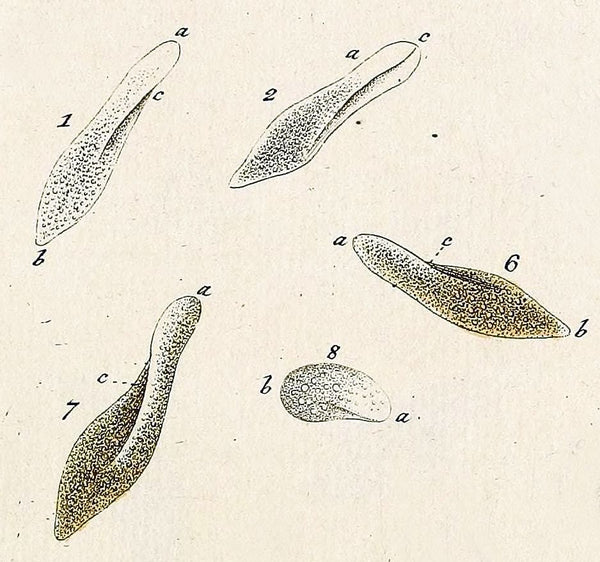- Continue Shopping
- Your Cart is Empty
Fine-tuning "the practice..."
As a fanatic about truly natural-style aquariums; one who embraces the nuances of the wild habitats- the aesthetic, the function, the color of the water- you're very well attuned to everything that the use of botanical materials can bring to your tank.
Our "practice" of botanical-style aquariums is becoming more and more "mainstream" all the time, with hobbyists from all sorts of aquatic disciplines dabbling with, and incorporating botanical materials into their work. Some are doing it purely for the aesthetics; some for fish breeding, others for the adventure- and some simply want to do some cool experimentation!

When people ask me why I like to add leaves to my aquariums, I can probably give hem a dozen or more reasons why; among the most important is for the ecological "enhancements" they offer as they break down.
Regardless of YOUR rationale for adding "stuff" to your tanks, it's important to follow some basic "best practices" that those of us in the game for a while have learned- sometimes, painfully, I might add! One of those is to go SLOWLY when adding materials to an established aquarium.
I know, I know. We must have mentioned this literally 5,000 times in they blog and elsewhere- but it's fundamental to what we do.
It seems logical, but in practice, it's not always that easy to restrain ourselves, right? I mean, it's just a bunch of leaves and stuff...What could go wrong?
Well, a lot, if we're less than careful!
Think about what happens when leaves and botanical materials fall into streams and other bodies of water in nature.

When leaves fall into streams, field studies have shown that their nitrogen content typically will increase. Why is this important? Well, for one thing, scientists see this as evidence of microbial colonization, which is correlated by a measured increase in oxygen consumption.
Hmm...
This is interesting to me, because the rare "disasters" that we see in our tanks (when we do see them, of course, which fortunately isn't very often at all)- are usually caused by the hobbyist adding a really large quantity of leaves and botanicals at once to an established, stable aquarium, resulting in the fishes gasping at the surface- a sign of...oxygen depletion?
That makes sense, right?
These are interesting clues about the process of decomposition of leaves when they enter into our aquatic ecosystems. They have implications for our use of botanicals and the way we manage our aquariums. I think that the simple fact that pH and oxygen tend to go down quickly when leaves are initially submerged in pure water during lab tests gives us an idea as to what to expect in aquariums..
Rapid changes.
And to an aquarist, rapid changes in the environment = bad news.
A lot of the initial environmental changes will happen rather rapidly, and then stabilize over time. Which of course, leads me to conclude that the development of sufficient populations of organisms-beneficial bacteria- to process the incoming botanical load is a critical part of the establishment of our botanical-style aquariums.

Fungal populations are also important in the process of breaking down leaves and botanical materials in water as are higher organisms, like insects and crustaceans, which function as what ecologists call "shredders." So the “shredders” – the animals which feed upon the materials that fall into the streams, process this stuff into what scientists call “fine particulate organic matter."
You know, "detritus" and "stuff in the water."
In studies conducted in tropical rainforests in Venezuela, decomposition rates were really fast, with 50% of leaf mass lost in less than 10 days! Interesting, but is it tremendously surprising to us as botanical-style aquarium enthusiasts? I mean, we see leaves begin to soften and break down in a matter of a couple of weeks- with complete breakdown happening typically in a month or so for many leaves.

And biofilms, fungi, and algae are still found in our aquariums in significant quantities throughout the process- just like in nature.

The wild habitats that we are fascinated by are highly dynamic environments, and change continuously. They're constantly evolving, accumulating new materials, and creating new physical habitats for fishes to forage among. These new food sources and chemical/energy inputs are important to the biological diversity and continuity of the flooded forests and streams of the tropics.

We replicate this process in the aquarium by adding new botanicals, conducting water exchanges, etc. The basics of aquarium husbandry and management haven't really changed in a century. And they are just as applicable to the botanical-style/blackwater aquarium as any other. The only real "difference" here is in the context- and how we understand what is actually going on and why.
Mental shifts.

We are not managing aquariums to be sterile glass boxes, "dioramas", or "zen gardens." It's not just a "look." We are understanding that a real "nature/natural-style aquarium" embraces the processes of nutrient import/export, decomposition, bacteria/fungal growth, and long-term nutrient utilization by the organisms which we keep. The appearance is far different than a system strictly set up for aesthetics. Rather, our systems offer a unique combination of form AND function...what we call "functional aesthetics."

The "look" and the "function"- working hand in hand to create a replication of Nature far more authentic than what we've done in the past in the hobby. And what is required to execute this?
Patience. A long-term view. Observation. Understanding.
Stay studious. Stay patient. Stay diligent. Stay observant. Stay creative. Stay adventurous. Stay curious...
And Stay Wet.
Scott Fellman
Tannin Aquatics








Scott Fellman
Author